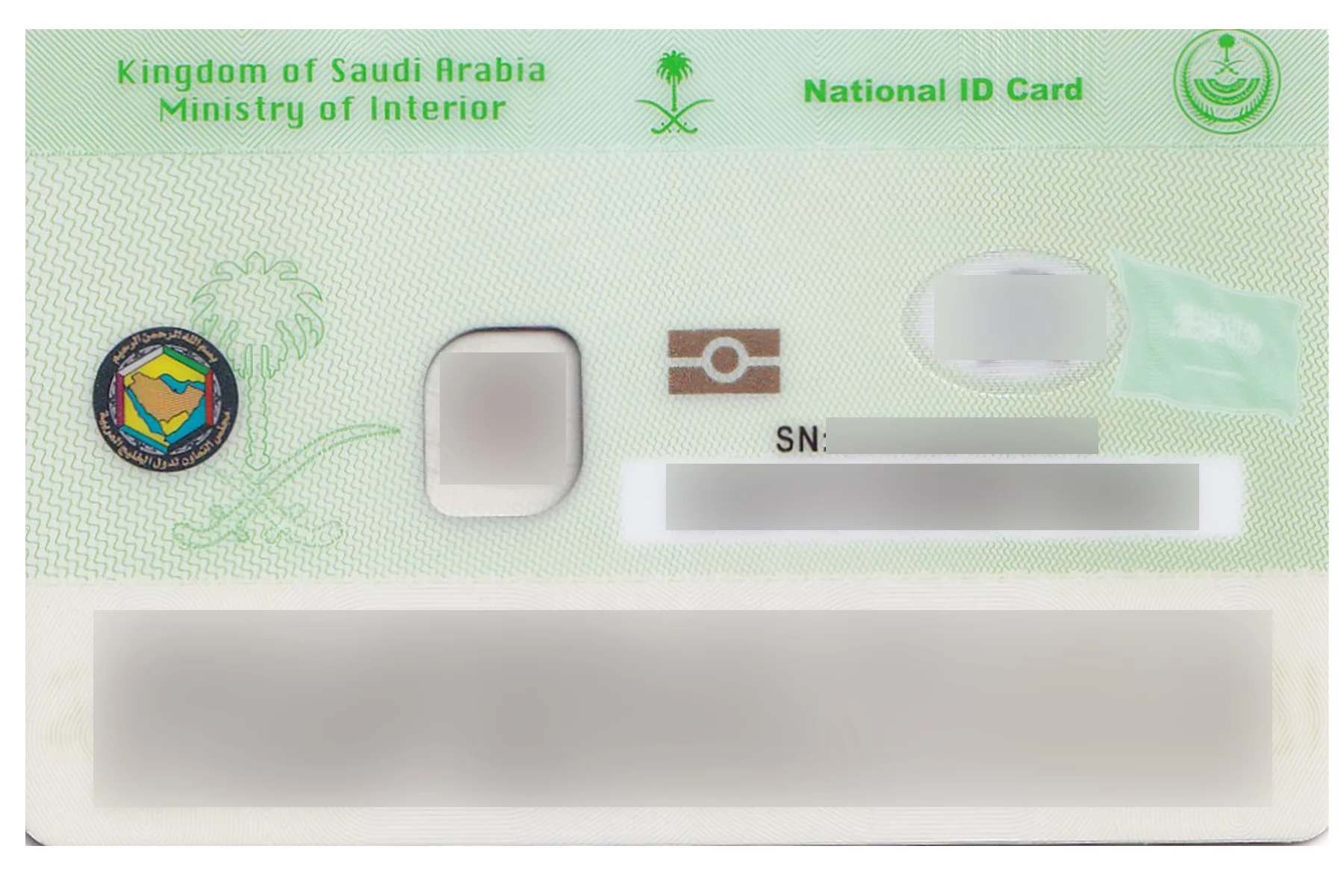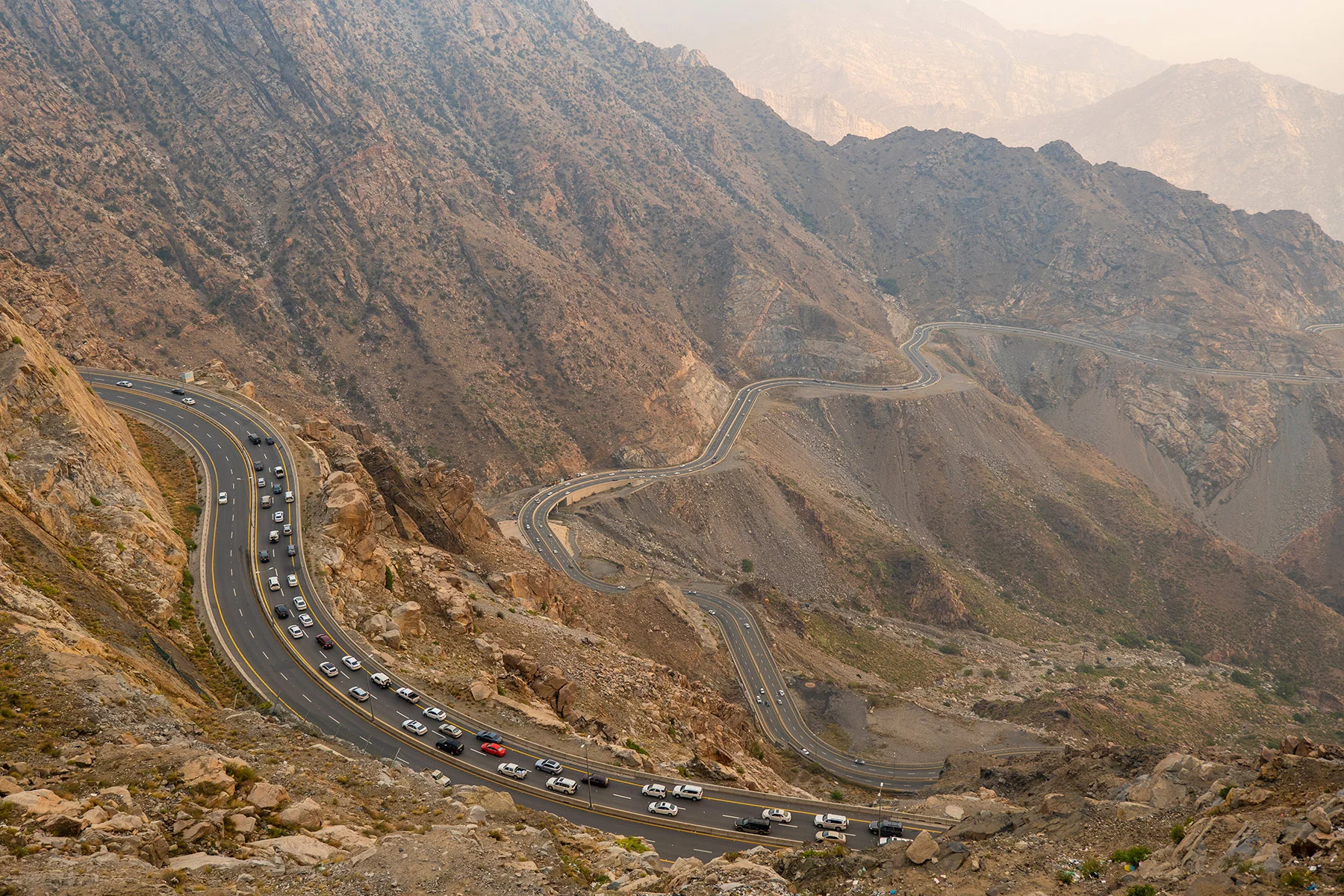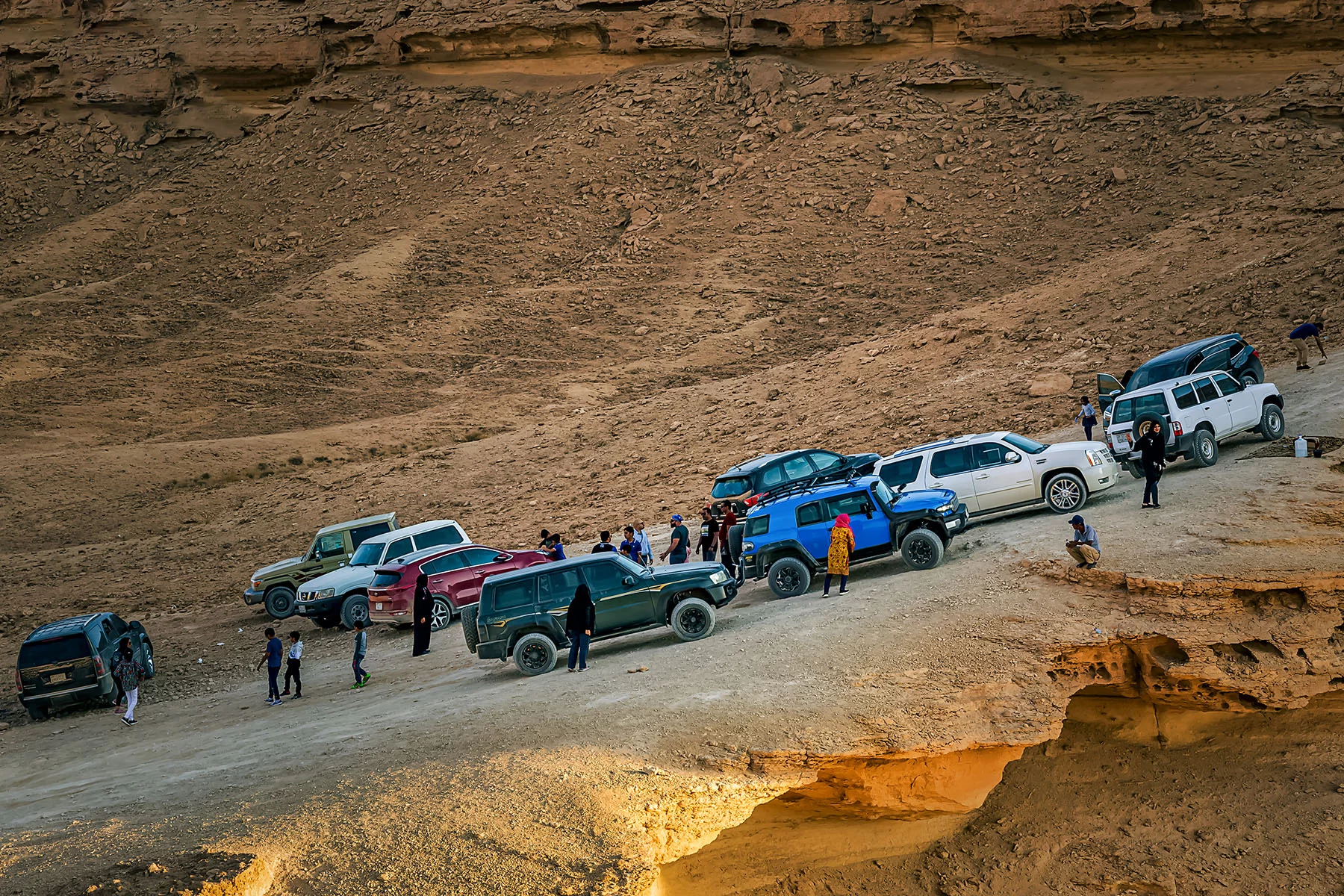Driving a car in Saudi Arabia is not quite the white-knuckle ride it once was. Road conditions and safety standards are improving fast. While driving in Saudi Arabia is still a challenge for new expats in the country, a little patience, persistence, and common sense go a long way. With our guide to driving in Saudi Arabia, you’ll be able to go the extra mile, too.
Continue reading to learn more about the following:
- Driving in Saudi Arabia
- Who can drive in Saudi Arabia?
- Saudi Arabia driving licenses
- Drivers with disabilities in Saudi Arabia
- Car registration and maintenance
- Driving costs in Saudi Arabia
- Driving rules and penalties in Saudi Arabia
- Road signs in Saudi Arabia
- Traffic information in Saudi Arabia
- Parking in Saudi Arabia
- Road accidents and breakdowns
- Cars in Saudi Arabia
- Car repair in Saudi Arabia
- Tips on driving in Saudi Arabia
- Useful resources
Rentalcars.com
Ready to explore your new home in Saudi Arabia? Take your life to fifth gear with Rentalcars.com. Rentalcars.com is an international rental portal that takes the hassle out of hiring a car. Get connected with local rental agencies in over 160 countries worldwide and rent in confidence with Rentalcars.com
Driving in Saudi Arabia
Driving in Saudi Arabia is a daily necessity for tens of thousands of expats. Running a car is relatively affordable; this is just as well given the dearth of public transport.
Having your own car is convenient – and not just for the daily commute. There’s plenty to explore on four wheels in the Kingdom. Beyond cruising along Riyadh’s glitzy Tahlia Street or Jeddah’s elegant Corniche, there are beautiful beaches in Saudi Arabia to discover, ancient landmarks to visit, and exciting amusement parks for the kids in Saudi Arabia.

And you won’t be alone on the road, because one in five people in the country owns a car. If you take into account the millions of foreign workers who cannot afford one, though, this is a high percentage. That said, driving a car in Saudi Arabia takes some getting used to. While roads are generally very good, driving conditions and safety standards can be less so. But the situation is improving. Police are policing, awareness campaigns are teaching, and speed cameras are fining. Saudi roads have never been safer.
Driving conditions in Saudi Arabia
Conditions may be quite different from those you are familiar with. The Kingdom’s drivers have an (often deserved) reputation for fast and aggressive driving. Saudi highways can be intimidating places; tailgating and high-speed undertaking (including on the emergency lane) are par for the course. A road diversion may lead you blindly off into the wasteland. And then there are natural hazards: blinding sandstorms, flash floods, camels wandering unlit roads at night, and, of course, the blistering summer heat.
Car designs and street signs
Cars in Saudi Arabia are left-hand drive. Automatic transmission is standard. Road layouts should be familiar to those used to driving on that side of the road, and if you’re a fan of roundabouts, you’re in luck.
Turning right at a red light is permitted unless signs specifically forbid it. Street signage (in cities, at least) is clear and, for the most part, bilingual (Arabic and English). Sat nav is, however, invaluable. Only the main city streets are actually known by their official names. Local directions will normally be given relative to landmarks.
The main regulatory body for driving in Saudi Arabia, including issuing licenses, is the Public Security Department of the Ministry of Interior.
Who can drive in Saudi Arabia?
You need to be at least 18 years old to drive in the Kingdom. Holders of driving licenses issued in the EU, USA, Canada, Australia, New Zealand, as well as the neighboring GCC states (Bahrain, Kuwait, Oman, and UAE), can use them for three months. An international driving license is valid for one year. After that, it is necessary to convert your license to a Saudi one. In mid-2018, women became eligible to drive in Saudi Arabia for the first time.
Saudi Arabia driving licenses
The Saudi driver’s license fits neatly in the wallet and includes the driver’s name, date of birth, photo, and license expiry date.
Getting a driving license in Saudi Arabia
If you don’t already hold a license of any kind, or you hold a license from a country that cannot be converted immediately to a Saudi license, you will have to take a test. To do so, you will need to find a driving school closest to where you are based (Dallah Driving Schools are well-known across the country, and are a good bet).
The first step is to pay the SR400 license fee at a bank (keep the receipt). Then take the following to the driving school (no appointment necessary, but get there as early as you can):
- Original iqama (residence permit)
- Iqama photocopy
- Passport photocopy
- Four passport-sized photos

At the driving school, you will need to complete an application form (in Arabic, so you may need help). You will also take an eye test, and submit a medical report indicating your blood group. A three-hour tuition class and computer test follow. If you pass, you then take a simple driving test. If you pass that, a 10-year license will be issued on the spot.
Exchanging a foreign driving license in Saudi Arabia
Many expats driving in Saudi Arabia exchange their foreign license for a local one. Holders of licenses issued in the EU, USA, Canada, Australia, New Zealand, and neighboring GCC states need not take a test to obtain a Saudi license.
The first step is to register for an Absher e-services account. Then you will need to pay the SR40 license fee on the Sadad platform. You’ll then go to an approved hospital to get eye and blood tests done; after which you will get the license translated into Arabic (by an approved translation institute).
You can then take your iqama (plus a photocopy), your foreign license, the translated license, the medical report, and the receipt to your nearest driving school. Dallah Driving Schools are well known and are a good bet. A traffic police officer inside the driving school will take the documents and issue the license on the spot.
Drivers with disabilities in Saudi Arabia
Cities in Saudi Arabia have dedicated parking spaces for drivers with disabilities. Cars without disabled badges are routinely towed. Saudi citizens with disabilities are entitled to subsidies to enable them to adapt their vehicles to meet their needs.
Car registration and maintenance
If you are buying a new or used car through a dealer, they will typically handle all registration (istimara) formalities. Second-hand car showrooms will also normally assist with registration. Note that istimara must be renewed every three years, and this can be done online by registering with the government’s Absher service; this also now allows the user to change vehicle ownership. The current renewal cost is SR300.
As with any bureaucratic endeavor in Saudi Arabia, there are ways to avoid time-consuming visits to government offices to complete paperwork. Most employers, for example, will have a ‘Mr Fixit’ who will complete formalities on your behalf; your only input being a signature on the form.
Vehicle registration plates are in Arabic and English. You would be advised to take a photo of the plate in case you ever need to quote the number (or, more likely, find the car in a car park).
Driving costs in Saudi Arabia
Some of the main costs to consider when driving a car in Saudi Arabia are:
- Annual vehicle inspection – every car must pass an annual Motor Vehicle Periodic Inspection test (also known as fahas). The fahas certificate is also required when selling or changing ownership of a car. The inspection fee is SR73;
- Maintenance – Saudi Arabia’s hot, abrasive climate can make car maintenance costs mount. It is recommended to service a car every 5,000 kilometers or three months, whichever comes first. Original spare parts in Saudi Arabia can be expensive (less so for Japanese models), but labor isn’t. A basic service (oil change and filter) should be in the region of SR200. A new car will be under warranty, and depending on the terms of the warranty services/maintenance will be carried out by the agent/dealer for a period of time;
- Insurance – fully comprehensive motor insurance is not compulsory in Saudi Arabia, however third-party coverage is. As a guide, fully comprehensive insurance for a Toyota Camry will be in the region of SR1600 (depending on provider) per year;
- Fuel costs – a liter of 95-octane fuel is set by the government at $0.55, about half the global average;
- Tax/tolls – there are no road taxes or tolls in Saudi Arabia. The exception is the causeway linking the Eastern Province with the island of Bahrain, which costs SR25 one way.
Driving rules and penalties in Saudi Arabia
General road rules in Saudi Arabia
Although many drivers appear to flout them, there are road rules in Saudi Arabia. Assume that they will be enforced because failure to abide by them could mean a fine, points on the license, or even a driving ban.
Seat belts are mandatory for drivers and front-seat passengers. A child under 10 must be in a car seat. When overtaking, the vehicle in front must be passed on the left. You cannot overtake if there are two solid lines down the middle of the road. When entering a roundabout, you must give way to vehicles already on the roundabout.
Penalties and suspension
Keep your driving license, registration documents (istimara), insurance details, and iqama copy in the car, as traffic police may ask for them if you are stopped.
In terms of penalties, the license is suspended if a driver amasses 24 points. Driving under the influence of alcohol or drugs, along with drifting, accrue 24 points, leading to an immediate driving ban; and probably more serious legal consequences, too.
Running a red light is 12 points, as is driving face-on into traffic. Failure to comply with traffic police orders is eight points, as is driving a vehicle without brakes or lights. Failure to give right-of-way to vehicles on a roundabout incurs six points. In addition, failure to use the seat belt is two points, as is the use of a mobile phone. They will delete points from the driver’s log after a year without any traffic violations.
The speed limit in Saudi Arabia
Speeding is a leading cause of accidents (and deaths) in Saudi Arabia. Speed limits vary from 50km/h in built-up areas to 70km/h on urban freeways, and 120km/h on national highways. Exceeding the speed limit by more than 25km/h will land you a minimum SR900 fine and six points on your license. There are speed cameras all over major routes in the country.

Driving under the influence in Saudi Arabia
Saudi Arabia has a strict, zero-tolerance policy for alcohol and drugs. Penalties for driving under the influence of either, ranging from SR5000 to SR10,000 plus points, are likely to be the least of your worries. A lengthy jail term (and probably deportation) will follow.
Distracted driving laws in Saudi Arabia
It is illegal to use a mobile phone while driving in Saudi Arabia. If the traffic police catch you, you can expect two points on your license and a fine of between SR500 and SR900.
Driving without a license in Saudi Arabia
Driving without a license in Saudi Arabia will incur a fine if you cannot present one if asked by an officer. The severity of the fine will depend on whether the license was simply not on you when stopped, or whether you were driving while disqualified.
Road signs in Saudi Arabia
Road signs in Saudi Arabia are usually bilingual (Arabic and English), although those in more remote or rural areas may be in Arabic only.
Traffic information in Saudi Arabia
Saudi Arabia is a large, but sparsely populated country, meaning that in many areas traffic is light, and congestion is rarely a problem. The Kingdom’s cities are the exception. Riyadh, Jeddah, and the Eastern Province conurbation of Dammam/Al Khobar/Dhahran conurbation are notoriously bad for traffic. Google Maps is the go-to information source for many drivers in Saudi Arabia. The local Waze smartphone application also provides real-time traffic reports.
Parking in Saudi Arabia
Cities are the only places where you are likely to have to search and pay for parking. With some patience (and also if you don’t mind a bit of a walk) you can probably find free parking, even in city centers. There are paid car parks in all main cities, as well as some metered street parking.
Parking in Saudi cities is, by global standards, pretty cheap. One hour is unlikely to be more than SR10, even in downtown areas. There is usually no restriction on parking in residential areas (gated compounds with security being the obvious exception). If you do get a parking fine (which could be up to SR1000) then you can at least pay conveniently through Sadad, a national bills and fines payment portal.
Road accidents and breakdowns
Road accidents in Saudi Arabia
Unfortunately, road accidents are a fact of daily life in Saudi Arabia, and are witnessed all too often. Thankfully, most are relatively minor skirmishes. But while the Kingdom’s road safety record is grim, it is getting a lot safer. There were 33% fewer road accident fatalities in 2018, in comparison to 2017, transport ministry figures reveal. The ministry says the leading causes of fatal accidents are reckless driving, pre-occupation (e.g., mobile phone use), hitting a camel, and tire blowouts.

Rules on culpability in the event of an accident are not always clear. If you’re involved in an accident, you should first call the police on 933 (this is one of the emergency numbers in Saudi Arabia). Give details of the accident and the location. Then call your sponsor, who may be able to assist with speaking to the police, and possibly also your embassy.
Do not accept any responsibility for the accident at any stage; the police will arrive on the scene and prepare an accident report (you can’t get a car fixed without one). The report will apportion blame for the accident, so make your case clearly and firmly to the officer. If they find you to be at fault, you may be held in custody until you have paid reparations. This will also depend on your level of insurance coverage. Comprehensive policies are not compulsory.
Vehicle breakdowns in Saudi Arabia
Breaking down is never good – and even less so when you are in the middle of nowhere. And, in Saudi Arabia, there is a lot of middle of nowhere.
If your car breaks down in Saudi Arabia, the first rule is to get yourself out of harm’s way. Pull as far off the road as you can, and put your hazard lights on. If you have a warning triangle in the boot, use it. And if you have a breakdown recovery service, call them, or call the police. There is every chance a passing motorist will also stop to assist, too.
While you wait for assistance to arrive (and distances are big, so it could be a while), seek shade, and drink plenty of water.
Roadside assistance and cover
Most car dealerships offer roadside assistance for customers. Alternatively, Middle East Auto Service covers Saudi Arabia, while Morni offers assistance on demand via a smartphone app.
Conventional wisdom in Saudi Arabia is to keep your car well-maintained. Fill up with petrol when you can, and keep your phone charged (network coverage is pretty good across the Kingdom). Furthermore, know how and where to seek help if you need it.
Cars in Saudi Arabia
Japanese and American cars have long ruled the roost in Saudi Arabia. Valued for their reliability, robustness, good air-con, and extensive dealership networks (which equates to good availability of original spare parts anywhere in the country), they remain the preferred choice. Saloons and SUVs (e.g., Toyota Landcruiser or GMC Yukon) are popular options for expats, although every brand under the sun is represented here.

Importing a car in Saudi Arabia
Cars in Saudi Arabia are relatively cheap to buy and run. Therefore, unless you have some kind of (abnormally) sentimental feelings towards your vehicle back home, you really are better off buying or renting. This is because there are a lot of rules and paperwork involved in importing a car into the Kingdom.
For a start, the car cannot be more than five years old. In addition, you can’t bring in an SUV, unless you have a family. And the vehicle can only have a maximum of five seats; otherwise, they consider it a commercial vehicle.
If you are determined to bring your own wheels into Saudi Arabia, it is possible. For customs purposes, you will need to provide:
- a title
- a certificate from the Saudi Arabian Standards Organisation
- a legal purchase invoice
- certificate of origin for the vehicle
- proof of insurance
- a customs fee declaration
- landing authorization
- a copy of your Saudi driving license. (Don’t say we didn’t warn you!). Once the car is in Saudi Arabia, you must register and insure it, just as a local car would be.
Buying a car in Saudi Arabia
Many expats in Saudi Arabia have some form of transportation allowance included in their contracts. Often, that means a car, either that they drive themselves or with a driver. And, believe us, having a driver who knows where they are going is worth their weight in gold.
But for those who don’t have such luxuries or who might want a weekend run around, buying a car in Saudi Arabia is pretty straightforward. All the main car brands are available in the Kingdom. Pitch up at a dealer, take a test drive, and let them handle the paperwork. Perhaps they will even deal with the finance to get you on the road as quickly as possible. Note that most cars in Saudi Arabia run on petrol. Diesel cars are rare, and electric almost unheard of; for now at least.
Renting a car in Saudi Arabia
Renting a car (lease hire) is popular in Saudi Arabia and most of the rental companies (from the big international brands such as Avis, Hertz, Budget, Enterprise, Sixt, and Europcar to reliable local outfits) offer it to expats.
Any sizeable town in Saudi Arabia will have a hire company, although out-of-the-way places may only have Arabic speaking staff. Online bookings should present no problems.
Rental costs are reasonable: you’re looking at $30 per day for a compact and up to $200 per day for a luxury vehicle. SUVs are available too: $150 per day for a Toyota Fortuner, for example.
To hire a car in Saudi Arabia, you generally need to be at least 25. You also need to present either your Saudi or foreign driving license, and a passport (if you are a visitor), or iqama (if you are a resident).
Selling a car in Saudi Arabia
Selling a car in Saudi Arabia is easy. There are tons of auction houses and also second-hand showrooms. Alternatively, you can sell the vehicle back to your dealer. You will need to change the ownership details, and this can be done by registering on Absher, the government portal.
Carpooling/car sharing in Saudi Arabia
Most expats who car share organize it privately through friends or work colleagues. But professional carpooling and car-sharing networks are coming into the market. Carpool World has its own Saudi Arabia section. Check out region-specific social media, too. The Expats in Saudi Arabia Facebook page, for example, has a healthy following, and someone there may be able to give you some tips.
Car repair in Saudi Arabia
If your employer provides a car, or if you are on lease with a rental company, then you can avoid the headache of getting repairs done. If you are on your own, and you have blown a gasket, the good news is that there are workshops and mechanics on what seems like every street in Saudi Arabia. They will at least get you moving again. Labor costs are low in Saudi Arabia, therefore repairs shouldn’t cost the earth. If you want original parts, however, it’s probably best to go to a dealer.
Tips on driving in Saudi Arabia
Driving in Saudi Arabia is different, and sometimes stressful, but that doesn’t mean it can’t be enjoyable. Our tips for driving in Saudi Arabia will ensure you get the most out of your experience – and safely:
- Grow a pair of eyes in the back of your head! Failing that, keep a close and constant eye on your rear-view mirrors for tailgaters/undertakers;
- Be vigilant at night on unlit roads. Hitting a camel is a real risk, even on main roads;
- Don’t do road rage. It will get you nowhere. Literally;
- Slow down when approaching large intersections, even if you are on a green light. Jumping red lights happens;
- Take extra care near roadworks at night. They are sometimes inadequately lit;
- Keep your phone battery charged in case of emergencies;
- Keep plenty of water in the car at all times;
- Unless you are experienced at desert driving, stay on the tarmac. It’s easy to get stuck (and disorientated!) in sand;
- Stick to speed limits (even if others don’t). There are cameras everywhere;
- Beware of sunset during the holy month of Ramadan. Drivers may have been fasting all day and may be in a rush to get home to break the fast, tired and hungry. On the plus side, roads are almost deserted at this time;
- At petrol stations, someone will fill the car for you. They may also offer to quickly clean your windows for a small fee while you wait;
- If you have an accident, call the police first, then your sponsor;
- Never attempt to bribe a policeman. Be calm and polite, and show your driving license and iqama when requested;
- Always wear a seat belt;
- Don’t underestimate distances. They can be big. Stop and rest when you need to.
Useful resources
- Ministry of Interior – the governing body responsible for traffic and licensing affairs;
- MyGov – a detailed resource for issues related to vehicles and transportation in the Kingdom;
- Absher – an e-government initiative enabling, for example, ownership of vehicles to be transferred;
- Dallah Driving Schools – these are located across the country and are the place to go to obtain a Saudi driving license.






